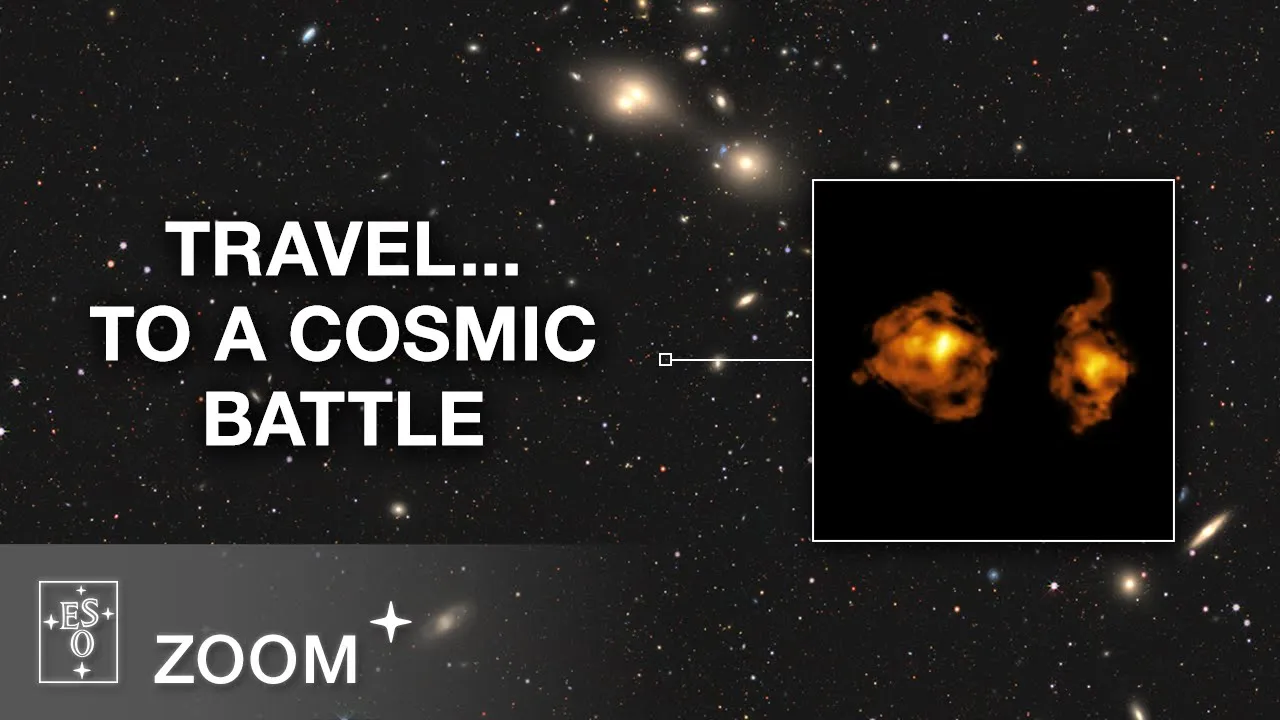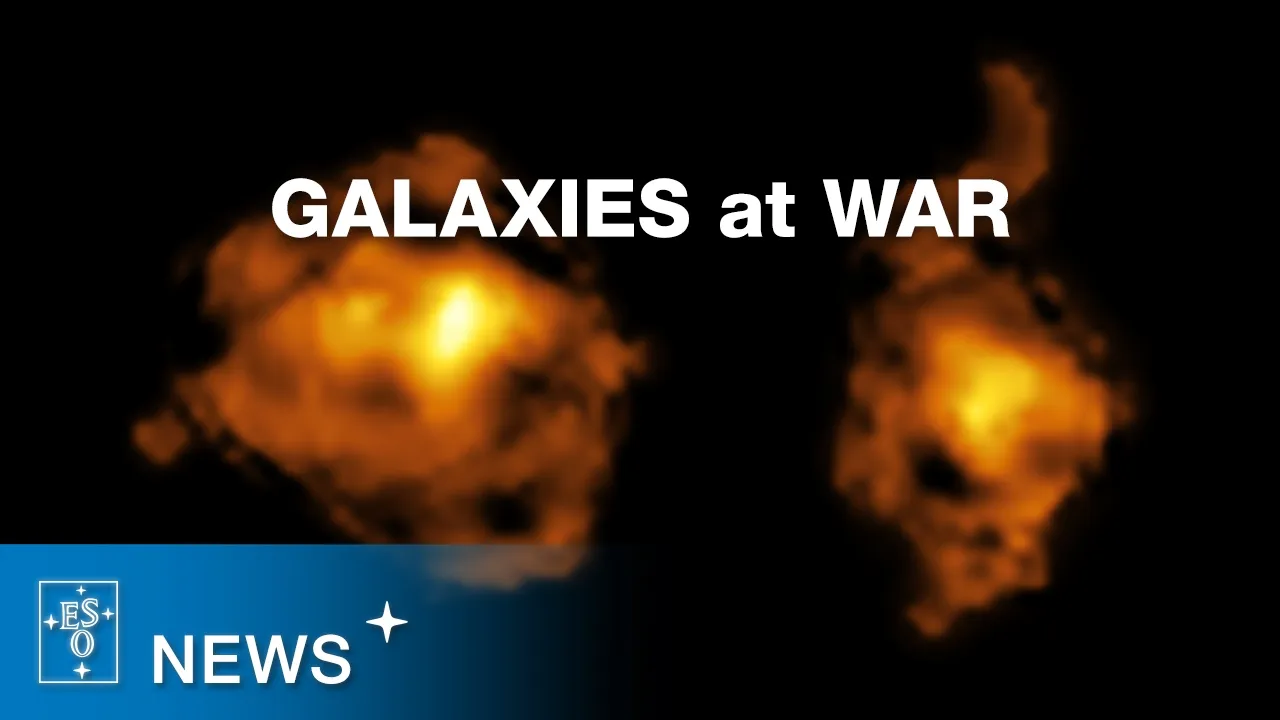Astronomers Capture Violent Cosmic Joust Between Two Galaxies


Astronomers utilizing high resolution telescope arrays observed two warring galaxies battling with radiation.
In a report published Wednesday in the scientific journal Nature, teams of researchers and astronomers joined together to combine data from the European Southern Observatory’s Very Large Telescope (ESO’s VLT) and the Atacama Large Millimeter/submillimeter Array (ALMA) to create footage of two galaxies using radiation to joust. The data and imagery recorded shows the two galactic rivals charging each other at speeds of 500 km/s over and over.
“We hence call this system the ‘cosmic joust’,” said study co-lead Pasquier Noterdaeme, a researcher at the Institut d’Astrophysique de Paris, France, and the French-Chilean Laboratory for Astronomy in Chile.
One of the galaxies was observed using a quasar to pierce the other with a beam of radiation. Quasars are the bright core of a galaxy which is powered by a supermassive black hole that researchers described can emit an unimaginably violent amount of radiation.
The report, aptly titled “Quasar radiation transforms the gas in a merging companion galaxy,” explains the effects of the quasar radiation on the wounded galaxy, describing a dramatic transformation.
The quasar strikes ruined established clouds of gas and dust that the galaxies use to form new stars, leaving the targeted galaxy with fewer “stellar nurseries” that appear even too small after the battle to support star formation. Instead the gas and dust were brought within reach of the attackers supermassive black hole, powered by the quasar, to become fuel for its next attack.
“Here we see for the first time the effect of a quasar’s radiation directly on the internal structure of the gas in an otherwise regular galaxy,” explains study co-lead Sergei Balashev, who is a researcher at the Ioffe Institute in St Petersburg, Russia. “These mergers are thought to bring huge amounts of gas to supermassive black holes residing in galaxy centers.”
Earth has no need to fear the joust as researchers explained just how far away the battle is.
“The light from this ‘cosmic joust’ has taken over 11 billion years to reach us, so we see it as it was when the universe was only 18% of its current age,” ALMA researchers explained.

The study was conducted in the dark skies of the Atacama Desert, Chile using the ESO’s VLT X-shooter and the ALMA high resolution telescopes. Both devices were crucial to scientists as the X-shooter was able to analyze the quasar’s light, and the ALMA’s HD results helped visualize the chaotic scene.
“ALMA’s high resolution helped astronomers clearly distinguish the two merging galaxies, which were so close together that they appeared as a single object in previous observations,” researchers said. “Observations with larger, more powerful telescopes could reveal more about collisions like this.” A telescope like ESO’s Extremely Large Telescope “will certainly allow us to push forward a deeper study of this, and other systems, to better understand the evolution of quasars and their effect on host and nearby galaxies.”
Image credits: “Quasar radiation transforms the gas in a merging companion galaxy” was created by an international team of international scientists and astronomers composed of S. Balashev (Ioffe Institute, St Petersburg, Russia), P. Noterdaeme (Institut d’Astrophysique de Paris, Paris, France [IAP] & French-Chilean Laboratory for Astronomy [FCLA], Chile), N. Gupta (Inter-University Centre for Astronomy, Pune, India [IUCAA]), J.K. Krogager (Université Lyon I, Lyon, France & FCLA), F. Combes (Collège de France, Paris, France), S. López (Universidad de Chile [UChile]), P. Petitjean (IAP), A. Omont (IAP), R. Srianand (IUCAA), and R. Cuellar (UChile).
Source link




